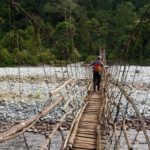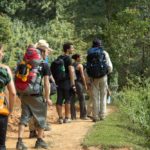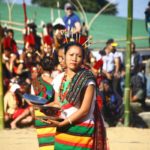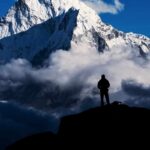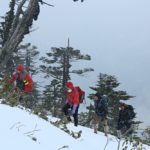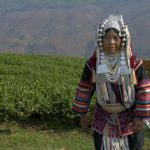Trekking in Putao & Myanmar Himalaya
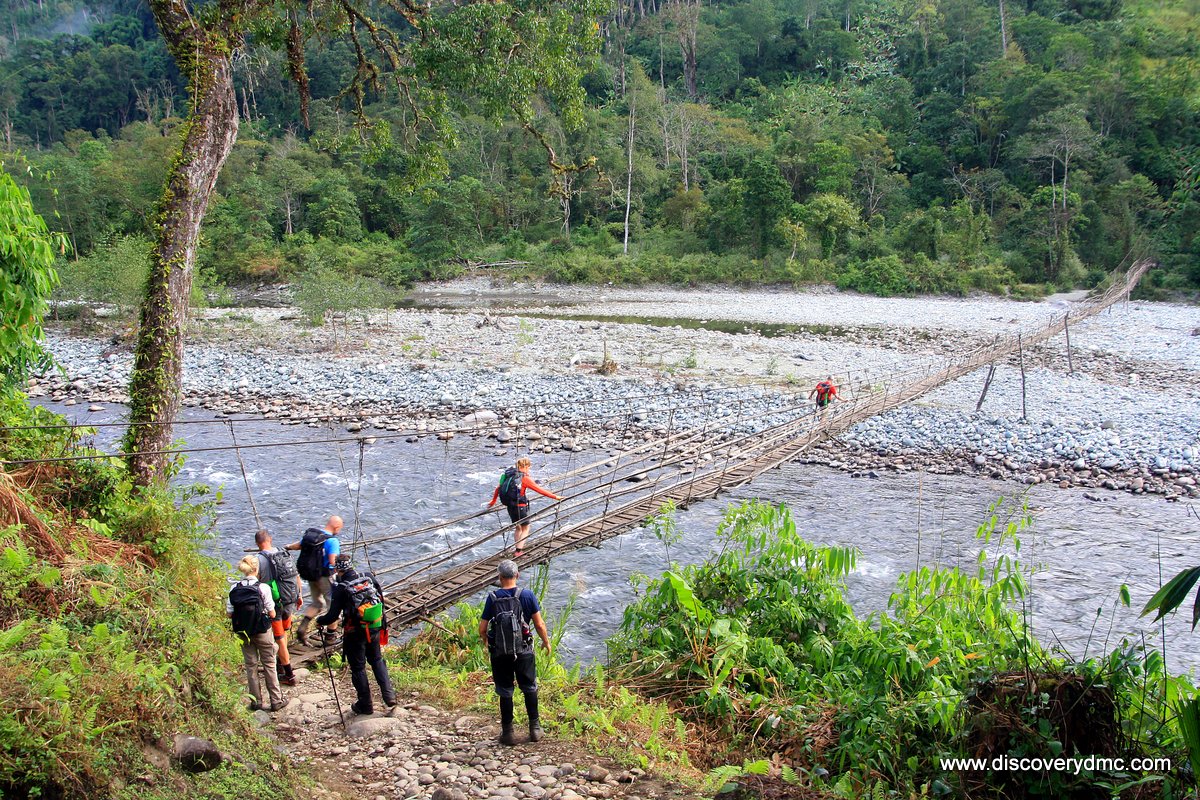
Putao is a small town situated in the far north of Kachin state. Due to its very hard accessibility, Putao and its surrounding nature have stayed quite undiscovered and pristine to this date. Putao town is situated in a valley of 457m (1,499ft) and the surrounding area is bordered by China, Tibet and India. The town is split half by the Namlang River and you can see the snow-capped Himalayan Mountains in the far distance. The valley is surrounded by rugged hills which some are covered in thick unpassable jungle. Putao region is also home for the Highest Mountain in South East Asia, Hkakabo Razi that rises up to 5,881 meters (19 294ft). Hkakabo Razi has been conquered by only few mountaineers and the expedition takes at least one month.
Exploring nature around Putao
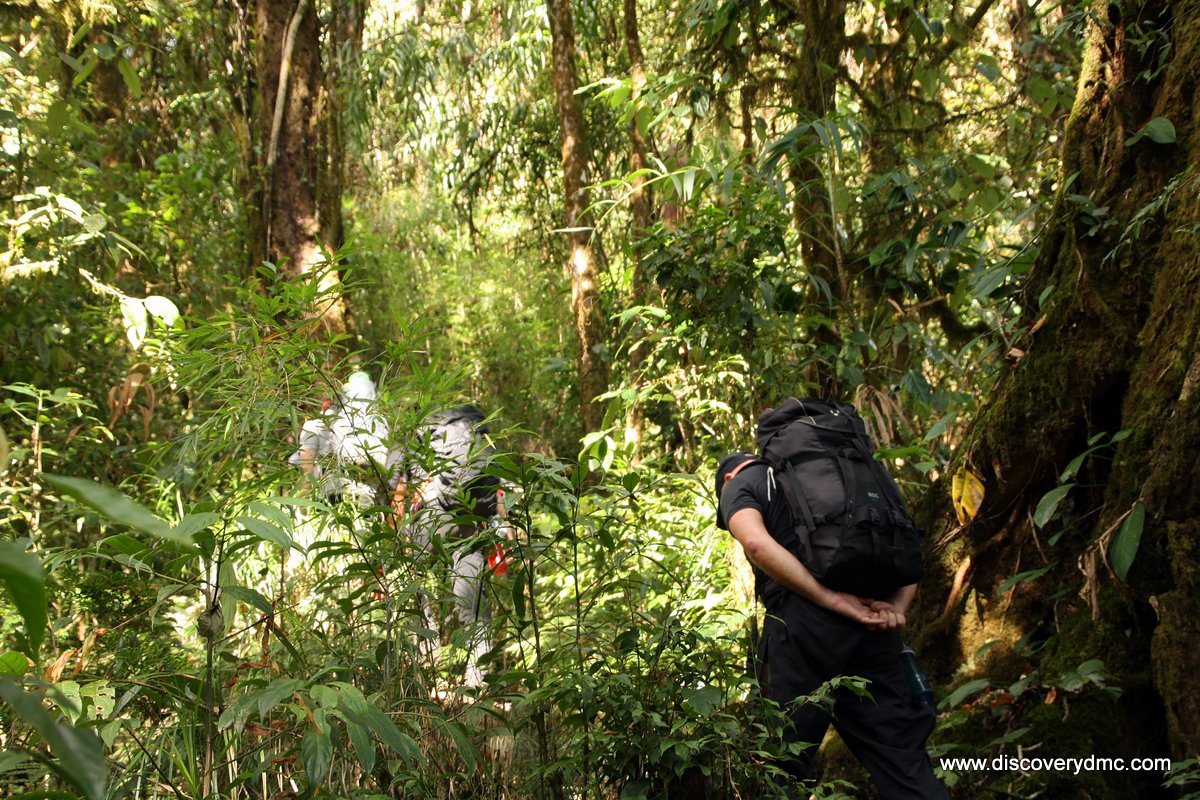
The nature of Putao valley and the surrounding areas is as pure as nature gets and unique with flora and fauna that can be only found in the region, for example you have a chance to find the enchanting “Black Orchid”. Eastern Himalaya is a true hot spot for wildlife and due to its hard accessibility and uncharted areas scientists are still finding an average of 35 new species a year. The nature of the area varies a lot due to different altitudes but it is mostly thick with subtropical forests, bamboo groves and sub-alpine species with veins of clear mountain creeks running through the valleys.
Ethnic encounters in Putao Valley & Myanmar Himalaya
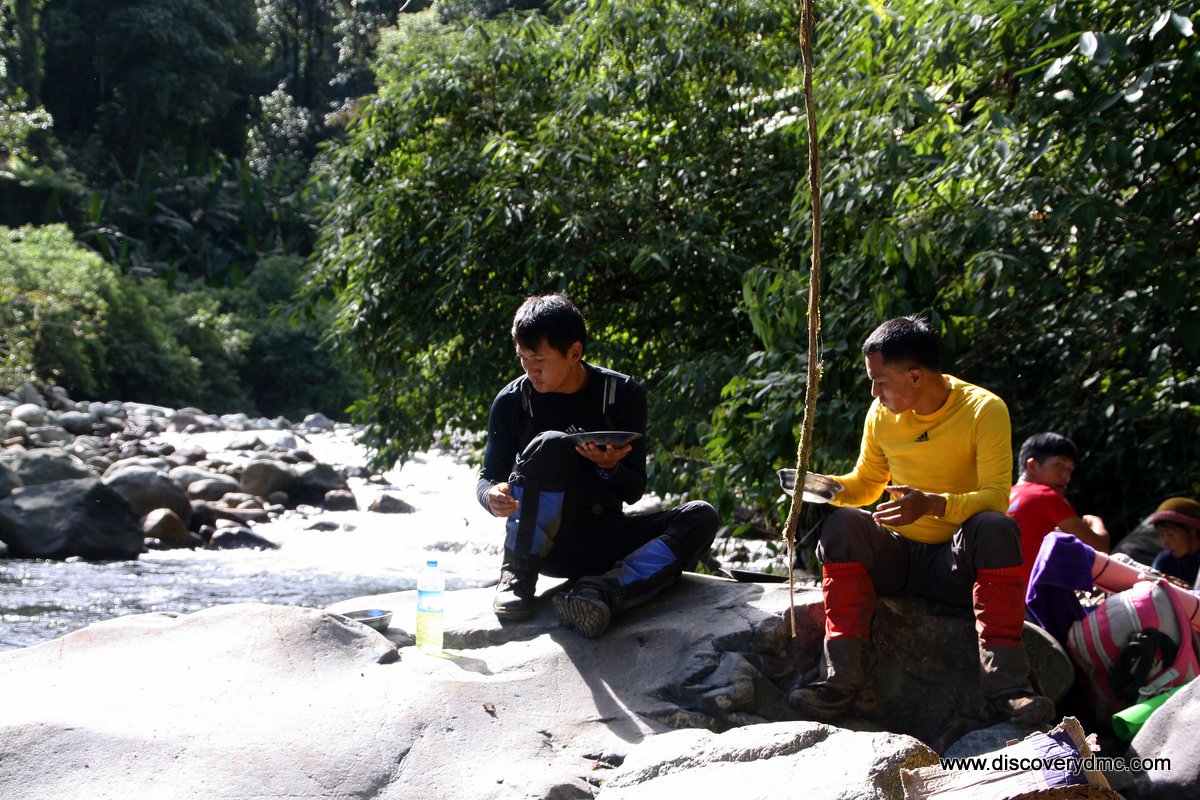
Putao and around is habituated mainly by Kachin, Rawang and Lisu ethnic people and determined missionaries have made Christianity the main religion of the area, but in more rural parts animistic believes play still strong role in people’s daily lives. Like all people in Myanmar the locals are friendly and welcome visitors with shy enthusiasm. It is highly recommended to visit some of the surrounding villages as they are still living simple lives undisturbed by western influences. These encounters are great experiences for both sides if they are done respectfully and on terms of the locals.
Activities in the Putao region
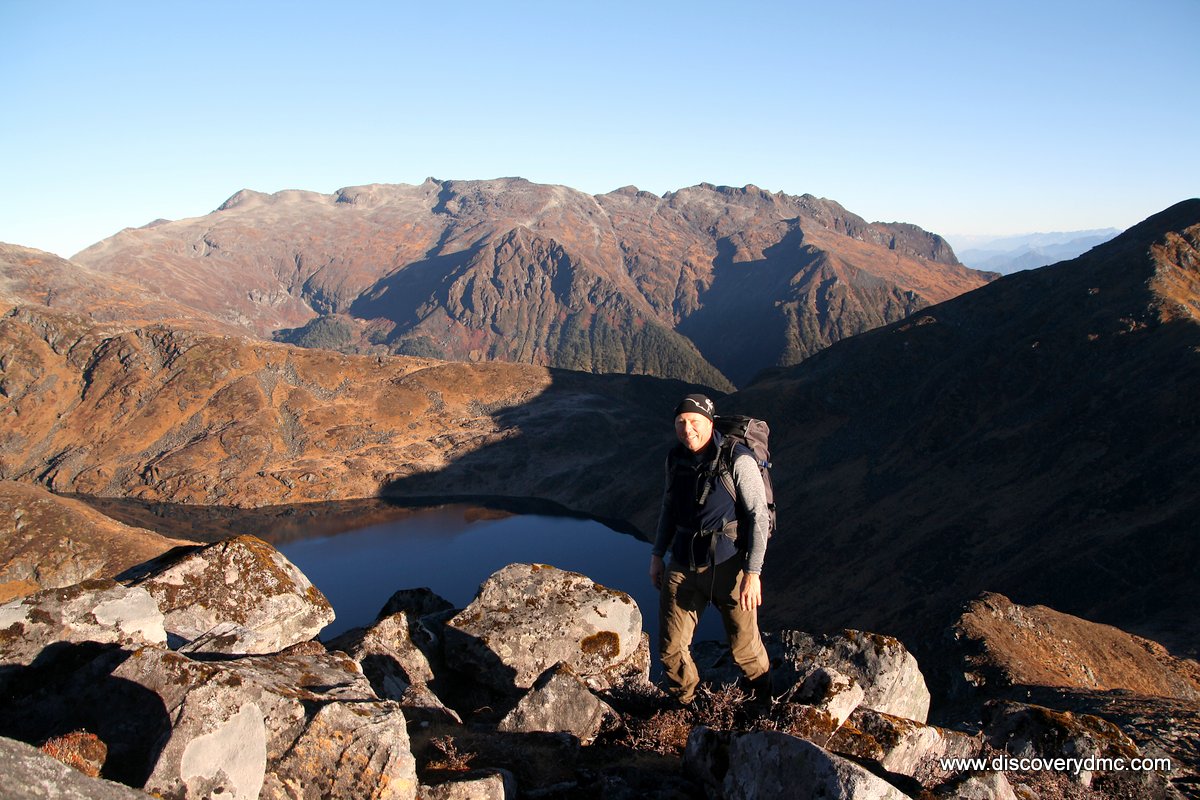
Putao is the starting point for all short and long expeditions to the surrounding wilderness. The Namlang and Malikha rivers offer great chances for canoeing or white water rafting. For trekkers there are countless of different treks and routes with different difficulty levels from few days to couple of weeks. It is also possible to arrange day trips to surrounding villages for the ones that want to stay overnight comfortably in Putao with western comforts such as warm shower.
How to get to Putao?
Like said Putao is the further most town in Myanmar and getting there is not very easy but nowadays it is much easier that few years back. At the moment Air Bagan and Golden Myanmar are operating between Mandalay, Myitkyina and Putao twice a week. The flight secludes are constantly changing so it is best to check the latest info from your tour operator. Tourist do not need a permit to go to Putao town, but to go outside of town permit is needed and the application process must be made through tour company and the process takes about a week. So basically to see the nature and surroundings you need a permit. There is a road from Myitkyina to Putao but currently foreigners are not allowed to travel on that road.
When is best time to travel to Putao & Myanmar Himalayan region?
The climate in Putao is humid subtropical climate which is monsoon influenced. Putao has three seasons with winter, hot and rainy seasons. The climate gets cooler and harsher the higher you trek and after the snow line temperatures might drop as low as -10 Celsius.
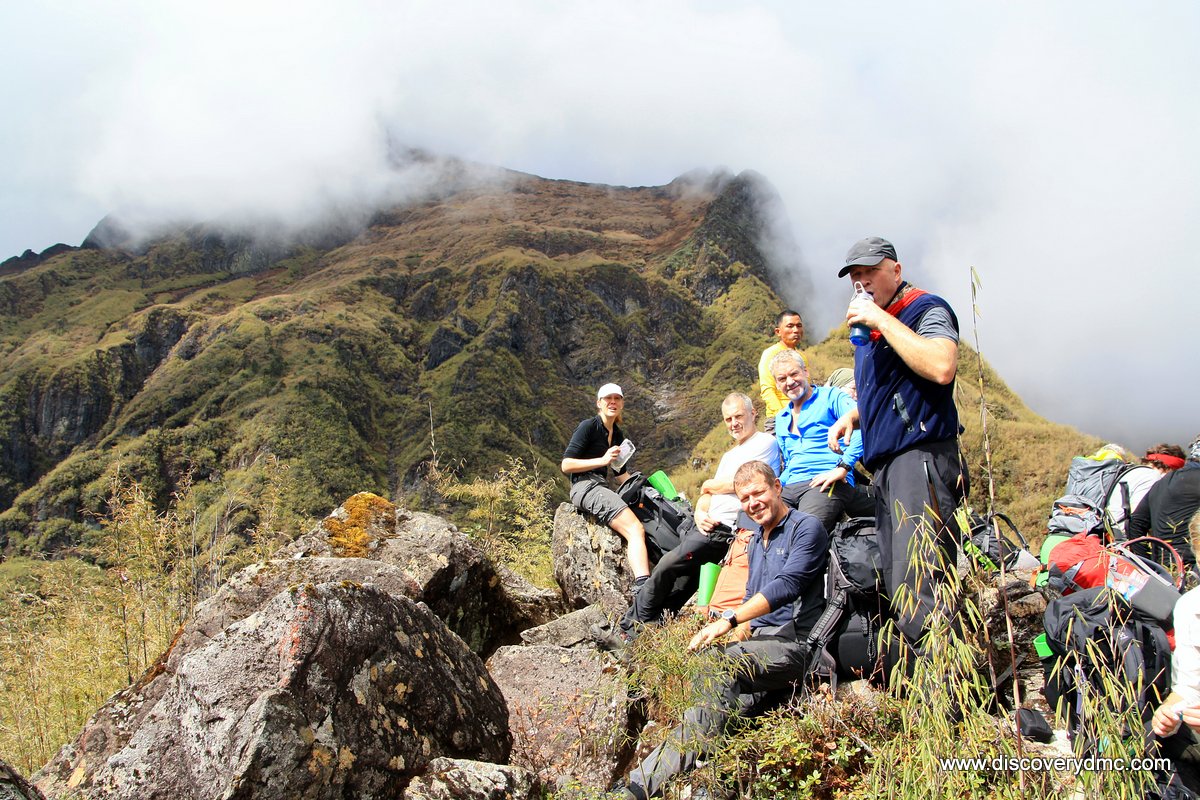
November->February (winter): This is the most popular tourist season with usually clear skies and warm days with cool temperatures after sunset. Average temperature varies between low 3/10 degree and high 20/30 degree Celsius. Temperatures at the snow line (above 3000m) can easily drop below freezing with some snow fall.
March->May (summer): During this season temperatures are warmer with hot and humid days in the valley but still comfortably cool in the evenings. This is the best time to scale the higher peaks like Phangrang Razi due to less snow fall on the mountains. Average temperatures are 10/15 Celsius for low and 20/35 high. Towards May climate gets more humid and occasional showers can be expected.
June->October (rainy season): Rain fall is almost daily and weather is very humid and temperature varies between low 18/20 and high 28/30 Celsius. This season is still fascinating for those interested in the flora and fauna as the rain make the nature flourish.
Treks, trekking peaks and soft adventure tours in Putao
Hiking and Treks in Chin State & Mt. Victoria NP
Chin State is located in North West of Myanmar bordering India and Bangladesh. The state is mountainous region with mostly bad roads conditions and only few transportation links. Chin state is sparsely populated and remains one of the least developed areas of Myanmar. The main hubs for hiking and trekking for surrounding areas are Kanpellet and Mindat. Due to its remoteness and hard accessibility Chin state has stayed undiscovered by mass tourism.
Mt Victoria (Nat Ma Taung in Burmese or Khonuamthung in Chin) is the main tourist attraction and highest mountain of Chin State rising up to 3053 meters. Mt. Victoria is set in little-visited and beautiful Nat Ma Taung National Park. Mt. Victoria has prominence of 2231 meters which makes it astonishing viewing point for the surrounding areas.
Nature of Mt Victoria & Nat Ma Taung National Park
Chin state is mountainous state and due to its remoteness and hard accessibility it has maintained its nature quite intact. The mountainous hills are covered with evergreen forests and hill savanna. There are many natural watercourses flowing from the mountains forming number of valleys and gorges. The tallest waterfall in Chin State is Bungtla Waterfall near Matupi
Nat Ma Taung National Park and Mt. Victoria are rich with flora and fauna with some 159 different bird species. There are also mammals such as wild board, leopard, gibbon etc. The area has been protected nature park since 1994 which has helped it to sustain its beautiful and lush nature. You can see tropical and subtropical forests and higher altitudes are covered with many temperate and alpine species.
Meet the Chin tribes
Chin state is home for many different ethnic groups that can be comprised in to six main groups: the Asho, Cho, Khumi, Laimi, Mizo and Zomi with dozens of sub-groups. The groups are historically related but speak divergent languages and dialects and have different cultural identities. In the area of Nat Ma Taung there are ethnic tribes of Dai, Upu and Ya known for their tattoo-faced women. The practise is now outlawed so you don’t see tattoos on younger women. About 80% of the people in Chin state are Christians but many of the tribes have still deep animistic believes and traditions.
Where to travel and what to do in Chin state ?
Main activities of the area is exploring the nature and surrounding villages. Treks to Nat Ma Taung are arranged from Mindat or Kanpellet. For those who want to go up to Mt. Victoria the easy way you can take a drive through steep winding mountain road to trail head and take about 1.5hrs trek to the summit. Longer treks are also available but for these you need a porter and a guide with lodging in very simple conditions at village homestays. Due to its big population of different birds which some are endemic the area of Mt. Victoria is also really good for bird watching.
Travelling to Chin state
Some parts of Chin are still off limits for tourists and due to bad road condition Chin state is quite hard place to move around. Public transportation in the area is still in poor condition and we recommend going there by private car or on guided tour. Kanpetlet can be reached from Bagan in approx. eight hours including lunch stop.
Climate of Chin Hills
Mt. Victoria is snow free year around but temperatures can get freezing during the cold season from end of November to late January. The climate follows three distinctive seasons: Cold season Nov-Jan, hot season Feb-Apr and Rainy May-Oct. Average temperatures range from 15,5 Degrees Celsius to 21 Degrees Celsius with April and May being the hottest months. If you travel to Chin State during cold season the average temperature in higher areas (above 1000m) is around 5 Degrees Celsius. During rainy season southern part of Chin receives more rain due to the storms of Bay of Bengal. Rain showers are still daily everywhere what makes the roads and paths really muddy and travelling might be quite unpleasant.
Hiking in Hsipaw – old Shan kingdom and centre for adventure enthusiasts
Hsipaw is a small town with relaxed pace of life situated 200 kilometres North East from Mandalay. Situated on the mighty Shan hills it is a perfect spot for trekking and exploring the ethnical villages that are dotting the surrounding highlands. The surrounding nature hosts also several natural hot springs that are nice spots to take a bath local style. A few kilometres south of Hsipaw you can find a picturesque waterfall which is a great half day destination for cooling swim.
There are also plenty of Pagodas and old traditional houses to admire and one of the must see place is the old Shan prince palace (more like a mansion) at the northern end of town. The last Shan prince disappeared during military coup in 1962 and today his nephew and his wife are taking care of the mansion and gladly give insights of the History of Shan state.
Nature & Landscape of Hsipaw
Built on a river bank of Dokthawaddyi River and surrounded by mighty Shan hills Hsipaw is a great place to enjoy nature and breathe the pure air of the highlands. The valley around is mainly paddy fields where locals grow their seasonal crops and you can still see oxcarts going on the roads delivering different goods from the nearby farms. The hills are covered with lush forests dotted with tea plantations.
Meet the minorities
Hsipaw and the surrounding areas are mainly inhabited by Shan, Palaung, Pao-O ethnic minorities. The colourful main market is a place worth visiting with all village people gathering to trade their local goods. The main resource of income for the rural villages is tea cultivation and people are still living in simple conditions with strong traditions. Locals are friendly and welcome tourists with curiosity, but for better insight of their lives we recommend hiring a Palaung or Shan guide.
Treks and activities around Hsipaw
Although the town itself is a very charming place Hsipaw is still mainly a starting point for treks to the surrounding areas. There are different length treks available and during treks the overnights are at local houses or monasteries with shared facilities. There are several guides with lots of knowledge about the nature, villages and society of the area and most of them speak really good English. You have also a possibility to rent a bike and go for independent day trips to explore the hot springs and waterfalls of the area.
How to get to Hsipaw ?
Situated next to Mandalay-Lashio road Hsipaw is easily reachable with buss from Mandalay (aprrox. 8hrs) or Pyin Oo Lwin (aprrox 6hrs). We recommend doing the rain journey from Mandalay (11hrs) or Pyin Oo Lwin (7hrs). The railway is a true work of art traveling through steep hills and over the 300 meter deep Gokteik Gorge. We recommend taking a bus to Pyin Oo Lwin and jumping on the train from there to witness the breath-taking train journey but cutting it bit shorter. It is also possible to rent motorbikes from Mandalay and make the journey independently. The road condition is good all the way to Hsipaw with varied landscapes.
Best time to visit Hsipaw & Kyaukme
The best time to go for treks is from November until to end of March. Situated in the hilly areas of Shan state, Hsipaw and around stay cooler even when the plains of Myanmar are blazing hot. There are three distinctive seasons, winter (November-February) which is the most popular tourist season. During this season the night time temperatures in the higher altitudes (above 1000m) might be as low as 10 degree Celsius but days are still comfortably warm and around 20-25 degree. During Hot season (March-mid-May) the temperatures rise towards the rainy season but evenings are still pleasantly cool and daytime temperatures stay around 30 degree Celsius. During rainy season (May-October) some showers can be expected every day with occasional heavy rainfall especially in late June through July. After the rainy season the surrounding nature is at its best teeming with new life with lush and green scenery.
Kyaukme green hills & Palaung villages
Situated only 40 kilometres from Hsipaw, Kyaukme can be referred as its little sister of Hsipaw with similar scenery around it. For its small size the town is surprisingly full of life mainly because of its status as a main marketplace for surrounding areas. There is a big population of Chinese immigrants and the Chinese quarters consists almost half of the town. Most of the immigrants are working for the area’s big bamboo paper industry. As a town Kyaukme might not be as interesting as its big sister, but Kyaukme offers great trekking opportunities off the beaten trails. Kyaukme gets much fewer travellers than Hsipaw so it has a certain charm and original feel to it.
For trekking you need to take a 30 minutes ground transport out of the town to reach the trekking starting point. The journey is made local style with Tuktuk or motorbike taxi and is a small adventure of its own. There are some very good trekking guides in Kyaukme with good English and great knowledge of the area and its people.
Kyaukme can be reached by same means as Hsipaw, you just have to hop off from the train or bus about 1-2 hours earlier. It is also possible to arrange longer treks from Kyaukme to Hsipaw or vice versa.
Hsipaw and Kyaukme Tours and hikes
Hiking in Kalaw – hill station town with charm
Kalaw used to be a popular summer escape for British during the colonial rule. Kalaw stands high on the western edge of the Shan Plateau, 70 km west of Taunggyi and about halfway along the Thazi-Taunggyi road, situated at the elevation of 1320 metres the climate around Kalaw stays fairly temperate all around year. Here you can still admire many of the original colonial era buildings and soak in the beautiful surroundings. Kalaw is very popular starting point for different length treks.
Nature tours in Kalaw
The surroundings of Kalaw are perfect for trekking and the landscapes differ from rice paddy fields, pine forests, tea plantations to enchanting bamboo groves with rolling hills as the main feature of the area. There is also a beautiful reservoir lake surrounded by green forest which is a great place for cooling swim.
The minorities of Shan highlands
Kalaw is a great place for ethnic minority encounters and the surroundings are mainly habituated by Shan, Danu, Palaung and Pa-O people. Inside the town the best place to witness local life is the lively and colorful central market. Villagers come there to trade their products from surrounding areas. Due to popularity of Kalaw the locals are already used to see foreigners so the atmosphere is relaxed and you are welcome to join the hustle and bustle of the market.
Activities and treks in Kalaw
Kalaw is the most popular trekking destination in Myanmar and what makes Kalaw great is that you don’t have to have a guide to explore the surrounding areas. There are few places you can rent bikes for self-guided day trips around the beautiful nature. Most popular treks go from Kalaw to Inle Lake with duration of two to five days depending on the chosen route. There is also a spectacular elephant camp 40 minutes’ drive away from Kalaw. This elephant reservoir was founded in 2011 to protect the local environment and ageing working elephants of the area. The camp is a good example of well managed ecotourism and we highly recommend visiting. You can also do a one night trek to the camp with overnight stay in a local Village.
How to get to Kalaw ?
You can reach Kalaw from Bagan with buss leaving at 7.30 and arriving around 3pm. If you feel extreme you can take 26hrs train journey from Yangon including a 5 hours stop in Thazi in the middle of the night. The stop is for resting because the train rides in Myanmar are amazingly bumpy.
Kalaw climate & temperature
Climate in Kalaw follows the same three season patter that is dominant in all of Myanmar. The biggest difference comes from the higher altitude of the region that keeps the weather nice and temperate all around the year. Average year temperature is 19 degree Celsius. Main tourist season is in the “winter” from November till February with pleasant temperatures, clear skies, warm days and cool nights (bring warm clothes with you). The down side is that it might be bit crowded on the most popular routes. Hot season lasts from March until May and weather gets warmer and occasional showers might occur. Rainy season is from end of May until October and you can expect almost daily showers but the rain fall is much lesser than in Yangon and other coastal parts of Myanmar. Driest month is January with almost no rain and rainiest is August with daily rainfalls.
Pindaya – quite town at the root of a mountain range
Pindaya is known for its extensive network of limestone caves, yet the town itself offers a charming stop as well. Sitting over 1,160 meters above sea level, it was developed around the tranquil Boutaloke Lake, surrounded by curved temple spires and regal Banyan trees. Oxcarts are not an uncommon sight and the pace of life is unhurried here. Pindaya is few hours’ drive away from Inle Lake, Kalaw or Taunggyi which make Pindaya a great pit stop when exploring Shan state.
Nature around Pindaya
The Nature of Pindaya is quite similar to Kalaw with various farming fields and rolling hills. The distinct difference is the limestone caves and formations that surround the area. The lake in the middle of the town gives a nice calming feature to the atmosphere of Pindaya.
The Pindaya Caves
Pindaya Caves winds north to south along a limestone ridge and for centuries has seen a steady stream of devoted pilgrims bringing images of Buddha to be placed in the cave shrines, an awe inspiring testament to the Buddhist faith. The most impressive of the cave shrines is Shwe U Min Paya, accessible through a series of covered staircases.
Once inside, the viewer is greeted by over 8,000 Buddha images of every imaginable size and material— gold to silver, alabaster to teak, marble to brick, lacquerware to cement – each reverently carried by pilgrims from all over Asia and places as far as northern Europe and USA. The pilgrimage continues today. The sight of thousands of Buddha statues in the labyrinth of the cave chambers is spellbinding.
People of Pindaya
The ethnic encounters and people habituating the surrounding areas are similar to Kalaw. Only difference is that Pindaya does not have market as big and colorful as Kalaw.
Activities and trekking in Pindaya
Although Pindaya is not as known for trekking as Kalaw you can still find great trekking routes around the area. You can choose short or extended excursions to surrounding Taung-Yo, Danu, Pa-O and Palaung villages. The limestone caves with countless of Buddha images are attraction not to be missed and can be reached by 45 minutes’ walk from the town centre. One quite popular and recommended trek is from Pindaya to Kalaw. This trek takes usually three days and two nights. Local village monasteries welcome foreigners for overnights (expect to pay donation between 10 000-15 000 kyats) with simple shared facilities. This trek suits for people with basic physical fitness and covers rolling hills farming land and some lush forest areas. The trek can be made without a guide but we strongly recommend hiring one as basically no one speaks English in the villages and with guide you are able to get more information about the area its people and you won’t get lost on the way.
How to get to Pindaya ?
Pindaya can be reach from Kalaw with two hours’ drive and there is also a regular train service via Thazi junction to Heho and Shwenyaung wich is the nearest train station.

